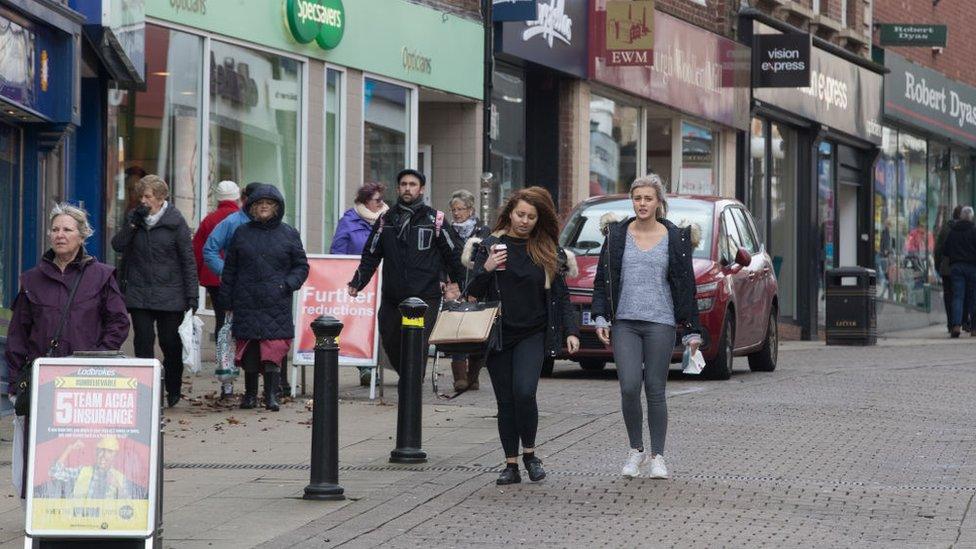Reality Check: Are business rates figures misleading?
- Published

The claim: The government's figures on business rates are misleading because they exclude inflation and an appeals adjustment.
Reality Check verdict: The figures do exclude both those things, but government publications specify that they do. The government's figures are for the situation after any appeals have been completed, so they depend on how accurately it has predicted their outcome.
The government has produced tables showing how much business rates would rise or fall in the coming year, broken down by region of the country and type of business.
The overall effect of all the changes comes to zero, which means that the policy is revenue neutral.
But there is a key caveat at the bottom of the table, which is that the figures are: "Before inflation and the adjustment to the multiplier for future appeal outcomes."
The inflation part is widely known. The measure of inflation used will become CPI (Consumer Price Index) instead of RPI (Retail Price Index), which will usually mean the increase is smaller, but that change will not happen until 2020. Increasing rates for RPI will add about 2% per year.
But the other part is a bit more complicated - it is the adjustment required to make sure that the changes in rates are revenue neutral even after some businesses have appealed against the rated value of their premises and won.
Analysis from the property consultants Gerald Eve suggested that the adjustment would be between four and five percentage points. They did that by working out how much business rates would change across the country to find out what adjustment would then be needed to make the policy revenue neutral again.
They add that including both the inflation and the appeals adjustment means that business rates will fall in 135 of the 326 local authorities in England, not 259 as the government claimed.
The Department for Communities and Local Government (DCLG) has strongly disputed suggestions that it has misled people with its figures, but has not disputed the suggestion that the appeals adjustment is between four and five percentage points.
Speaking on the Today Programme, Conservative MP Andrew Bridgen said he thought the figures provided, "might not be giving the picture that businesses in the real world are going to get when they get their bills".
This is certainly true. The DCLG has been clear that its figures are before inflation and the appeals adjustment.
The government's figures are for the situation after any appeals have been completed, so they depend on how accurately it has predicted their outcome.



- Published21 February 2017

- Published20 February 2017

- Published17 February 2017
